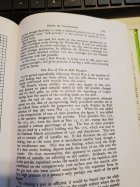Yes.... I know, this will be like throwing gasoline on a fire, but I have to ask.
Loaded up some test loads for .300 Win Mag using Berger 230s this afternoon, using IMR 7828SSC, H1000 and RE26. I'm happy with all these powders but the IMR powder has really shone for me and produces the least fouling.
I also know questioning whether "temp sensitivity" is really all that important for most shooters is a bit like questioning the thinking on climate change at the Glasgow COP "summit" (sic), but what the heck, let's go for it... Are unadulterated powders better, really?
When Hodgdon started importing ADI powders they latched onto to "temp sensitivity" thang and beat it to death. Do powders behave differently in varying temperatures? Certainly. But how do they impact most of us? Now there lies the rub. I live in the desert SW and wonder sometimes, how I ever got by without temperature insensitive powders. Were I to be a military sniper flying in from a mountain assignment to the deserts of the Middle East, I get it. But otherwise not so much. Seems to me "temperature insensitivity" has become a convenient excuse for a bad day at the range.
Similarly "copper fouling removal" has become a big thing, again started by the Hodgdon marketing department when they started prepackaging what we buy as CFE 223. Were I to be shooting a belt-fed MG in combat conditions, I get it. Otherwise not so much, really.
Seems like I'm picking on Hodgdon? Well, they led the marketing charge in these areas, however others have jumped on board to match them, which tells you how powerful those marketing pursuations have been. Otherwise, I have a great deal of affection and respect for that brand. Decades ago when I was a young reloading writer in the UK, the late Mr. Bruce Hodgdon arranged for me to collect various samples of their powders for use in my writing. This was when a number of Hodgon powders were made by Nobel in Scotland. It was very generous of him, and I haven't forgotten it.
But I do wonder, sometimes, if we haven't run down a rabbit hole we really didn't need to.
Not trying to be King Canute either.................................
Loaded up some test loads for .300 Win Mag using Berger 230s this afternoon, using IMR 7828SSC, H1000 and RE26. I'm happy with all these powders but the IMR powder has really shone for me and produces the least fouling.
I also know questioning whether "temp sensitivity" is really all that important for most shooters is a bit like questioning the thinking on climate change at the Glasgow COP "summit" (sic), but what the heck, let's go for it... Are unadulterated powders better, really?
When Hodgdon started importing ADI powders they latched onto to "temp sensitivity" thang and beat it to death. Do powders behave differently in varying temperatures? Certainly. But how do they impact most of us? Now there lies the rub. I live in the desert SW and wonder sometimes, how I ever got by without temperature insensitive powders. Were I to be a military sniper flying in from a mountain assignment to the deserts of the Middle East, I get it. But otherwise not so much. Seems to me "temperature insensitivity" has become a convenient excuse for a bad day at the range.
Similarly "copper fouling removal" has become a big thing, again started by the Hodgdon marketing department when they started prepackaging what we buy as CFE 223. Were I to be shooting a belt-fed MG in combat conditions, I get it. Otherwise not so much, really.
Seems like I'm picking on Hodgdon? Well, they led the marketing charge in these areas, however others have jumped on board to match them, which tells you how powerful those marketing pursuations have been. Otherwise, I have a great deal of affection and respect for that brand. Decades ago when I was a young reloading writer in the UK, the late Mr. Bruce Hodgdon arranged for me to collect various samples of their powders for use in my writing. This was when a number of Hodgon powders were made by Nobel in Scotland. It was very generous of him, and I haven't forgotten it.
But I do wonder, sometimes, if we haven't run down a rabbit hole we really didn't need to.
Not trying to be King Canute either.................................











